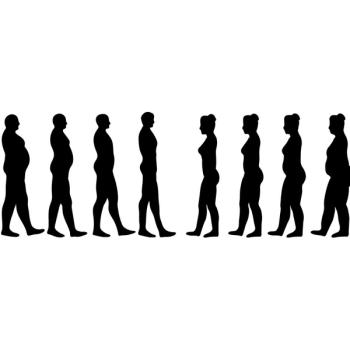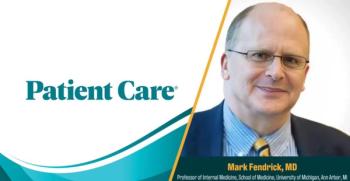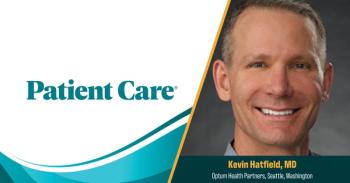Stimulant medications remain the foundation of pharmacologic treatment for attention-deficit/hyperactivity disorder (ADHD). Yet, a significant subset of patients—those who cannot tolerate stimulants, have contraindications, or face high diversion risk—benefit from nonstimulant therapies. The American Academy of Pediatrics (AAP) and the American Academy of Child and Adolescent Psychiatry (AACAP) recognize nonstimulant drugs as effective and appropriate in these scenarios, either as monotherapy or adjunctive treatment.1-3
Nonstimulants occupy a distinctive position in ADHD management. They act through mechanisms that differ from those of stimulant medications, often with a slower onset of action but a lower potential for abuse or misuse. Understanding their pharmacology, efficacy, and safety is key to integrating them effectively into individualized care plans.
Mechanisms of Action and Pharmacology
Three major classes of nonstimulant agents are currently used in US clinical practice: selective norepinephrine reuptake inhibitors (SNRIs), alpha-2 adrenergic (α₂A) agonists, and other off-label options such as bupropion and tricyclic antidepressants.
Atomoxetine (Strattera) was the first nonstimulant approved by the US Food and Drug Administration (FDA) for ADHD. It inhibits the presynaptic norepinephrine transporter (NET), increasing extracellular norepinephrine and, indirectly, dopamine in the prefrontal cortex—an area critical to attention and impulse regulation.4,5 This mechanism contrasts with stimulants, which primarily enhance dopaminergic transmission in striatal regions. Atomoxetine’s onset of action is gradual, typically requiring several weeks of consistent dosing before clinical improvement becomes evident.
Viloxazine extended-release (Qelbree), a newer NRI, has recently expanded nonstimulant options for both pediatric and adult ADHD.6 It shares mechanistic overlap with atomoxetine but also modulates serotonergic activity, which may contribute to its clinical profile.
α₂A agonists, including guanfacine extended-release (Intuniv) and clonidine extended-release (Kapvay), work through a different pathway. By stimulating central α₂A receptors in the prefrontal cortex, they enhance top-down control of attention and behavior while dampening noradrenergic overactivity.7 These agents are particularly useful for hyperactivity, impulsivity, and comorbid tics or sleep disturbances.
Other antidepressants, particularly bupropion, are sometimes prescribed off-label when standard options are ineffective or contraindicated.3 Although the evidence base is smaller, these alternatives may have value for adults with comorbid depressive symptoms.
Key Takeaways
- Three main drug classes are FDA-approved or commonly used as nonstimulants for ADHD: SNRIs like atomoxetine and viloxazine ER, alpha-2 adrenergic agonists including guanfacine XR and clonidine XR, and off-label options such as bupropion. These agents work through different mechanisms than stimulants, primarily targeting norepinephrine pathways in the prefrontal cortex rather than striatal dopamine transmission.
- Nonstimulants require patience—they work more slowly than stimulants: Unlike stimulants that often show improvement within days, nonstimulants typically require 4 to 6 weeks of consistent dosing to reach maximal therapeutic effect. Counseling patients and families about this delayed onset is essential to prevent premature discontinuation and ensure treatment adherence.
- Nonstimulants are first-line choices in specific clinical scenarios: They are particularly appropriate for patients with substance use history or diversion risk (due to noncontrolled status), those with tics or Tourette syndrome (α₂As can reduce tic severity), patients with cardiovascular concerns where stimulant-related increases in heart rate or blood pressure are problematic, and adults with comorbid anxiety or depression.
- Efficacy is moderate but clinically meaningful: Meta-analytic data show non-stimulants produce significant ADHD symptom improvement compared to placebo (standardized mean difference ≈ −0.52), with response rates of 40-60%. While effect sizes are approximately 0.2-0.3 points lower than stimulants, non-stimulants remain indispensable for appropriate patient populations and can be combined with stimulants for partial responders.
- Each nonstimulant class has distinct safety profiles requiring specific monitoring: Atomoxetine and viloxazine ER commonly cause GI upset and appetite suppression, with rare risks of suicidal ideation (boxed warning) and hepatotoxicity. α₂As require cardiovascular monitoring for hypotension and bradycardia, cause sedation, and must be tapered gradually to avoid rebound hypertension. All non-stimulants offer the advantage of lower abuse potential compared to stimulants.
- Combination therapy is evidence-based for partial responders: Adding an α₂A to stimulant therapy has demonstrated additional symptom improvement (effect size ≈ −0.36) and is supported by clinical trial data. When combining agents, monitor carefully for sedation and hypotension, and adjust doses accordingly to optimize both efficacy and tolerability.
Evidence for Efficacy
The evidence base for nonstimulant efficacy has grown substantially. Meta-analytic data encompassing more than 6000 children and adolescents across 37 randomized trials demonstrate that nonstimulants, as a class, produce significant improvement in ADHD symptom scores compared with placebo (standardized mean difference ≈ −0.52; 95 % CI −0.59 to −0.46).8
Among SNRIs, atomoxetine remains the most extensively studied. Trials consistently show moderate reductions in inattentive and hyperactive-impulsive symptoms with sustained benefit over time.4,5 Response rates typically range between 40% and 60%, somewhat lower than those observed with stimulants but clinically meaningful in appropriate patients.
Viloxazine ER has demonstrated similar efficacy in pivotal trials, leading to its FDA approval for pediatric ADHD in 2021 and adult indications in 2022.6
For the α₂As, guanfacine XR and clonidine XR have shown modest but significant symptom improvement, especially in hyperactivity and impulsivity domains.7 Some evidence also supports combination therapy with stimulants for partial responders, which can yield incremental benefit without substantially increasing adverse effects.8
While stimulants generally achieve larger effect sizes (approximately 0.2 to 0.3 points higher in standardized comparisons), nonstimulants remain indispensable for patients who cannot or should not use stimulants, and for those who benefit from adjunctive pharmacologic support.1,2
Safety, Tolerability, and Monitoring
Each nonstimulant class carries a unique safety profile that informs clinical selection and monitoring.
Atomoxetine is generally well tolerated but commonly causes decreased appetite, gastrointestinal discomfort, and mild sleep disturbance.4 A rare signal for suicidal ideation was observed in pediatric trials, prompting a boxed warning; patients should be monitored for mood changes during initiation.9 Although hepatotoxicity has been reported infrequently, it is considered a rare adverse event. Baseline liver function testing is optional but reasonable for patients with risk factors. Cardiovascular monitoring is also advised, as atomoxetine can modestly increase heart rate and blood pressure.
Viloxazine ER shares a broadly similar safety profile, with fatigue, somnolence, decreased appetite, and nausea reported most often.6 Because of its serotonergic properties, clinicians should monitor for mood changes and potential pharmacokinetic interactions, particularly via CYP1A2 pathways.
α₂As require specific attention to cardiovascular and sedative effects. Guanfacine XR and clonidine XR can cause somnolence, dizziness, hypotension, and bradycardia.7 Abrupt discontinuation may precipitate rebound hypertension; tapering is essential. These drugs may also be beneficial when mild sleep initiation problems accompany ADHD.
Across all agents, nonstimulants offer the advantage of lower abuse potential, an important consideration in adolescents, young adults, and those with comorbid substance use disorders.3 Nonetheless, comprehensive monitoring remains essential:
- Before initiation: record baseline heart rate, blood pressure, and weight/height (in children).
- During titration: reassess every 4 to 6 six weeks for efficacy, side effects, and adherence.
- Ongoing: monitor growth in children, cardiovascular parameters, and mental-health status at least annually.
Choosing Nonstimulants: Clinical Scenarios
Nonstimulant medications often serve as second-line or adjunctive therapy, yet they may be first-line choices in particular clinical contexts.
They are especially appropriate for patients with a history of substance misuse or diversion risk, as their noncontrolled status simplifies prescribing and reduces misuse potential.3 Similarly, individuals with tics or Tourette syndrome may benefit from α₂As, which can lessen tic severity while managing ADHD symptoms.7 In patients with cardiovascular disease where stimulant-induced heart rate or blood pressure increases are concerning, SNRIs or α₂As offer a safer alternative.
Adults with ADHD and comorbid anxiety or depressive disorders may respond better to SNRIs, which can be combined with other psychotropics when needed. Conversely, α₂As are sometimes used at bedtime to assist with sleep initiation problems common in pediatric ADHD. For children with autism spectrum disorder or developmental delay, nonstimulants may provide a gentler tolerability profile, though evidence remains limited and specialist guidance is advised.
Practical Prescribing and Titration
Effective nonstimulant use depends on setting expectations and titrating carefully. Unlike stimulants, which often yield improvement within days, nonstimulants may require 4 to 6 six weeks for maximal effect. Counseling families about this timeline helps prevent premature discontinuation.
Atomoxetine typically begins at 0.5 mg/kg/day in children (or 40 mg/day in adults) and can be increased after at least 3 days to a target of 1.2 mg/kg/day (maximum 100 mg/day).4 Dividing doses may improve tolerability.
Viloxazine ER dosing follows its labeled titration schedule by age group, with once-daily morning administration; adults and children should follow prescribing information for specific titration steps.6
Guanfacine XR is started at 1 mg daily and increased by 1 mg every 1–2 weeks, typically reaching 2–4 mg/day in children, with higher doses occasionally used in older adolescents or adults.3 Clonidine XR begins at 0.1 mg at bedtime and titrates slowly, usually to 0.2–0.4 mg/day divided twice daily.3 All α₂As must be tapered gradually to avoid rebound hypertension.7
Combination therapy is reasonable when monotherapy yields partial response. Adding an α₂As to stimulant therapy has demonstrated further symptom improvement (effect size ≈ −0.36).8 When combining agents, clinicians should monitor for sedation and hypotension and adjust doses accordingly.
Documentation is key: the rationale for nonstimulant initiation, such as stimulant intolerance, contraindication, or inadequate response, should be recorded clearly to facilitate payer approval and continuity of care.
Integrating Guideline Recommendations
The 2019 AAP clinical practice guideline underscores that for children aged 6 years and older, medication plus behavioral therapy is the recommended treatment strategy, with stimulants as first-line agents.1 However, it explicitly includes atomoxetine, guanfacine XR, and clonidine XR as acceptable alternatives when stimulants are ineffective, poorly tolerated, or inappropriate.
The AACAP echoes this guidance, emphasizing the importance of individualizing medication selection based on efficacy, side-effect profiles, comorbidities, and family preference.2 Both organizations note that combining behavioral and pharmacologic interventions yields the best outcomes.
From a practical standpoint, clinicians can consider the following approach:
- Assess stimulant suitability. If contraindicated or poorly tolerated, initiate a nonstimulant.
- Select agent by clinical profile. Choose an SNRI (atomoxetine/viloxazine) for attentional symptoms or comorbid anxiety; consider an α₂A when hyperactivity or tics predominate.
- Monitor and adjust. Evaluate response over 4 to 8 weeks and adjust dosing gradually.
- Combine if needed. Add an α₂As to stimulant therapy in partial responders.
- Continue comprehensive care. Reinforce behavioral therapy, school collaboration, and family education.
Conclusion
Nonstimulant medications have secured a defined and evidence-based role in ADHD management. They extend the therapeutic landscape for patients who cannot or should not take stimulants and provide clinicians with tools to tailor treatment to individual needs. SNRIs such as atomoxetine and viloxazine ER, along with α₂As guanfacine XR and clonidine XR, offer consistent though sometimes slower improvements in ADHD symptoms with lower abuse potential and distinct safety considerations.
Incorporating these agents requires careful titration, patient education, and routine monitoring, but the benefits—enhanced tolerability, sustained control of symptoms, and broader applicability across comorbid conditions—make nonstimulants indispensable in modern ADHD care. A thoughtful, guideline-based approach ensures that each patient receives treatment aligned with both clinical evidence and individual context.
References
- Wolraich ML, Hagan JF Jr, Allan C, et al. Clinical practice guideline for the diagnosis, evaluation, and treatment of attention-deficit/hyperactivity disorder in children and adolescents. Pediatrics. 2019;144:e20192528. doi:10.1542/peds.2019-2528
- American Academy of Child & Adolescent Psychiatry. ADHD: Parents’ Medication Guide. 2020. Accessed November 4, 2025. https://www.aacap.org/App_Themes/AACAP/docs/resource_centers/resources/med_guides/ADHD_Medication_Guide-web.pdf
- Non-stimulant medications available for ADHD treatment. American Academy of Pediatrics. Updated September 23, 2021. Accessed November 4, 2025. https://www.healthychildren.org/English/health-issues/conditions/adhd/Pages/Non-Stimulant-Medications-Available-for-ADHD-Treatment.aspx
- Fu D, Wu DD, Guo HL, et al. The mechanism, clinical efficacy, safety, and dosage regimen of atomoxetine for ADHD therapy in children: A narrative review. Front Psychiatry. 2022;12:780921. doi:10.3389/fpsyt.2021.780921
- Atomoxetine for ADHD in children and adolescents. NCBI Bookshelf. National Center for Biotechnology Information; 2023.
- Viloxazine ER (Qelbree). Prescribing information. Supernus Pharmaceuticals; 2023. Accessed November 4, 2025. https://www.supernus.com/sites/default/files/Qelbree-Prescribing-Info.pdf
- Sallee FR, Lyne A, Wigal T, McGough JJ. Long-term safety and efficacy of guanfacine extended release in children and adolescents with attention-deficit/hyperactivity disorder. J Child Adolesc Psychopharmacol. 2009;19:215-26. doi:10.1089/cap.2008.0080
- Peterson BS, Trampush J, Maglione M, et al. Treatments for ADHD in children and adolescents: A systematic review. Pediatrics. 2024;153:e2024065787. doi:10.1542/peds.2024-065787
- Wernicke JF, Kratochvil CJ. Safety profile of atomoxetine in the treatment of children and adolescents with ADHD. J Clin Psychiatry. 2002;63 Suppl 12:50-5.






















































































































































































































































































